Air Operations, Bonin Islands 15 11th Heavy Bomb Group B-24s attack port facilities and the town area at Okimura, and shipping throughout the Bonins.
[  | |   ] ]
Air Operations, CBI
BURMA
- 9 10th Air Force B-25s attack several bridges at Lashio.
- 33 P-47s attack troops, motor vehicles, and supplies at four locations.
- 16 P-47s strafe airfields at Anisakan, Nawnghkio, and Onbauk.
- 16 P-47s sweep the rail line between Hsipaw and Sedaw.
- 10 P-47s support Allied ground forces near Meza.
CHINA
- 3 308th Heavy Bomb Group B-24s attack the port area at Kowloon.
- 15 341st Medium Bomb Group B-25s organized into flights of 2 or 3 aircraft attack a bridge at Tingka and towns on both sides of the China-Burma frontier.
- 14th Air Force fighter-bombers mount more than 100 effective sorties against numerous targets in southeastern and southwestern China, especially around Changsha and Mangshih.
- 311th Fighter Group P-51s down 3 Ki-27 'Nate' fighters near Chengting at 1155 hours.
- Japanese Army ground forces strike in the vicinity of Kweilin and Liuchow and advance toward Kweiyang, from which they will be able to pose a serious threat to the Hump ferry terminals at Kunming and Chungking.
[  | |   ] ]
Air Operations, East Indies - FEAF B-24s and B-25s conduct heckling missions against various targets in northeastern Celebes.
- V Bomber Command B-25s support Allied ground forces in the Mapia Islands.
[  | |   ] ]
Air Operations, Japan 4 28th Composite Bomb Group B-24s attack the Suribachi airfield. 1 B-24s is forced to land in the USSR.
[  | |   ] ]
Air Operations, Europe
US 9th AIR FORCE
FRANCE:
- Despite bad weather that grounds or turns back the remainder of the 9th Bomb Division, 30 416th Light Bomb Group A-26s attack a stores depot at Haguenau. This is the first fully operational A-26 mission undertaken in the war.
GERMANY:
- 9th Air Force fighters provide limited support, 207 effective sorties, to US Army ground forces near Aachen and Huertgen.
US 12th AIR FORCE
ITALY:
- 12th Air Force medium bombers attack viaducts and rail bridges in northeastern Italy and Brenner Pass.
- XXII TAC fighter-bombers attack gun emplacements and other tactical targets as well as rail lines, rail yards, and ammo and fuel dumps.
YUGOSLAVIA:
- 12th Air Force medium bombers attack rail bridges along the Brod-Zagreb-Maribor lines.
US 15th AIR FORCE
AUSTRIA:
- 15th Air Force B-24s attack a marshalling yard and oil and other industrial targets in Vienna, and marshalling yards at Graz.
- 15th Air Force B-17s attack marshalling yards at Salzburg.
CZECHOSLAVAIA:
- 15th Air Force B-17s attack oil-industry targets at Brux.
GERMANY:
- 15th Air Force B-24s attack oil-industry targets at Blechhammer.
YUGOSLAVIA:
- 15th Air Force B-24s attack marshalling yards at Maribor.
[  | |   ] ]
Air Operations, Philippines - FEAF B-24s, including the VII Bomber Commandís 494th Heavy Bomb Group, attack the Legaspi airfield on Luzon, the Likanan airfield on Mindanao, and the Sasa airfield on Mindanao.
- B-25s and V Bomber Command B-25s conduct heckling missions against various targets in the central Philippines.
[  | |   ] ]
China The Japanese begin to advance from the area of Kweilin and Liuchow toward Kweiyang. If they can conquer Kweiyang, the road will be open to Kunming, the Chinese 'terminus' of the Burma Road, and to the Nationalist capital, Chungking.
[  | |   ] ]
Eastern Front German resistance ends in Tirana, the capital of Albania.
[  | |   ] ]
Pacific - The Japanese escort carrier Shinyo is sunk by the US submarine Spadefish (SS-411) in the Yellow Sea. The first torpedo out of 4 hit the stern, instantly disabling the turbo-electric motors and stopping the carrier. The impact detonated the poorly protected fuel tanks and caused a tremendous explosion and fire. Other hits follow, and Jinyo becomes a blazing inferno, begins to list rapidly to starboard and settle aft. More than 700 of her crew of 900 are killed.
- At this stage of the Pacific campaign, the US submarine war has been boosted by increasing numbers of British submarines being deployed from the Atlantic and Mediterranean to the Pacific. An admiralty statement on November 15 reveals that British submarines have sunk 69 Japanese vessels in five days.
- The Japanese submarine I-26 is sunk by aircraft from the US escort carrier Anzio (CVE-57) and the destroyer escort Lawrence C. Taylor (DE-415) in the Philippine Sea.
- The Japanese torpedo boat Hiyodori and the merchant tanker Shunten Maru (5623t) are sunk by the US submarine Gunnel (SS-253) in the South China Sea about 130 miles east of Tourane, French Indochina.
- The US submarine Picuda (SS-382) sinks the Japanese landing ship Mayasan Maru (9433t) and damages the merchant tanker Awagawa Maru southwest of Korea.
[  | |   ] ]
Western Front Operation QUEEN continues. In the southern sector of the XIX Corps, the 30th Div reaches Würselen, 6 miles north of Aachen.
In the southern sector of the front the offensive by Gen Patton's 3rd Army is developing: the 10th Arm Div, XX Corps, fans out to pursue the Germans across the Saar while the 95th and 5th Divs continue to advance toward Metz. The units of the XII Corps prepare for the final assault toward the Saar. During the night the Germans begin a general withdrawal.
Southeast of Lunéville, the 100th Div, XV Corps, 6th Army, prepares to attack Raon from the north, while during the night patrols from the 103rd Div penetrate into St Dié. The divisions of the French 1st Army, advancing on Belfort, reach Héricourt, Montbéliard and Hérimoncourt.
[  | |   ] ]
Images from November 17, 1944
German POWs in Holland
|
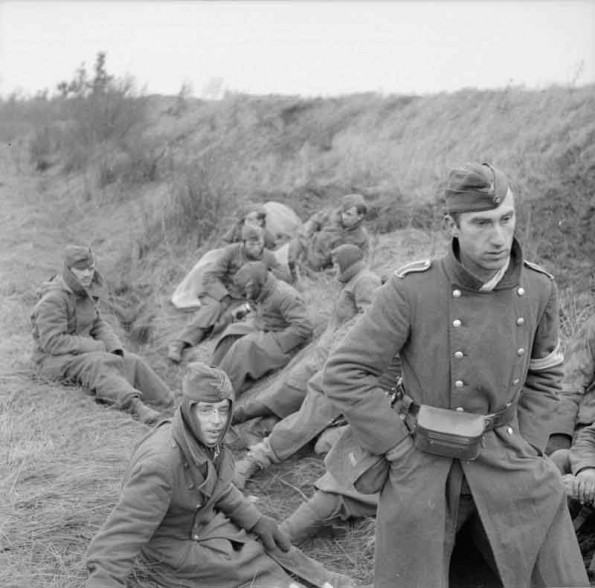 |
|
Soldiers of IV Corps Rest
|
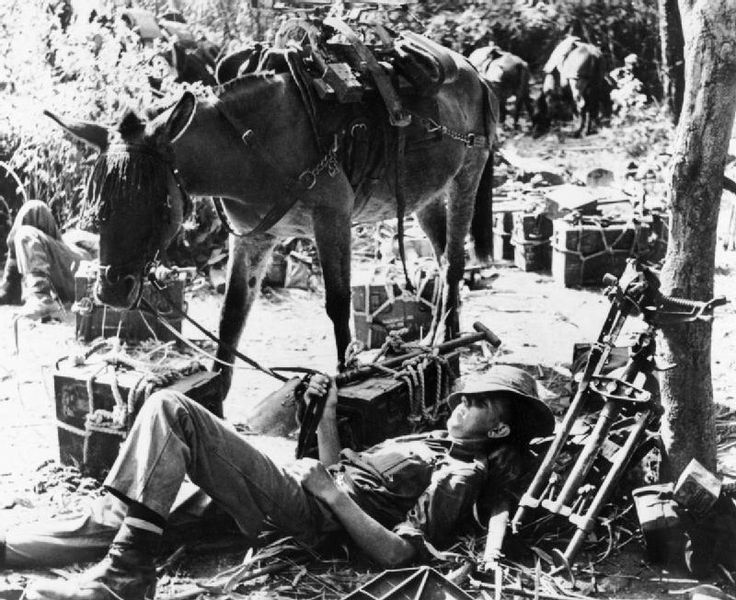 |
|
Entering Metz
|
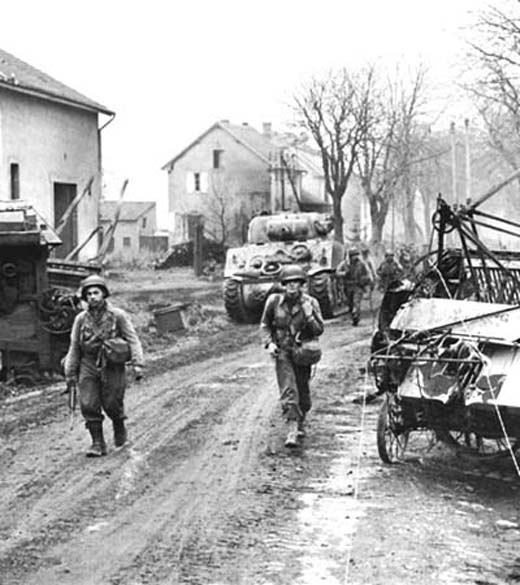 |
|
Heading for a Rescue
|
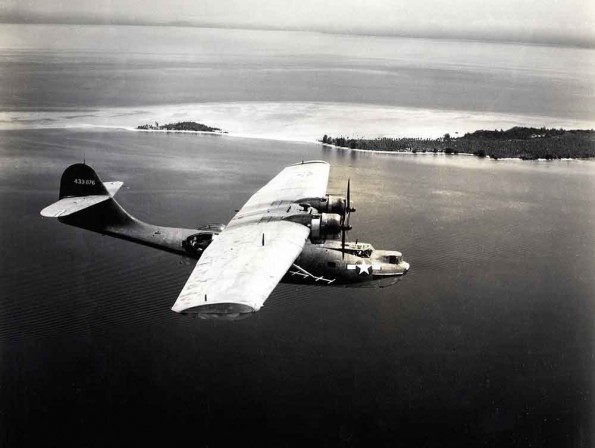 |
|
Rescuing a Downed Pilot
|
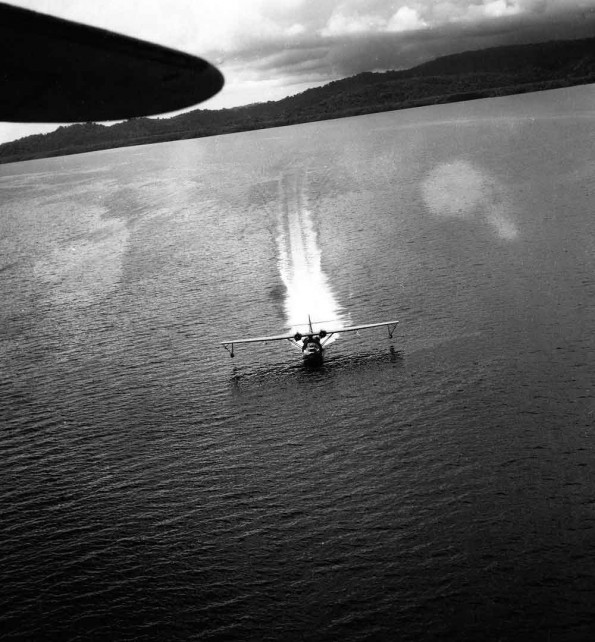 |
|
An M4 Sherman
|
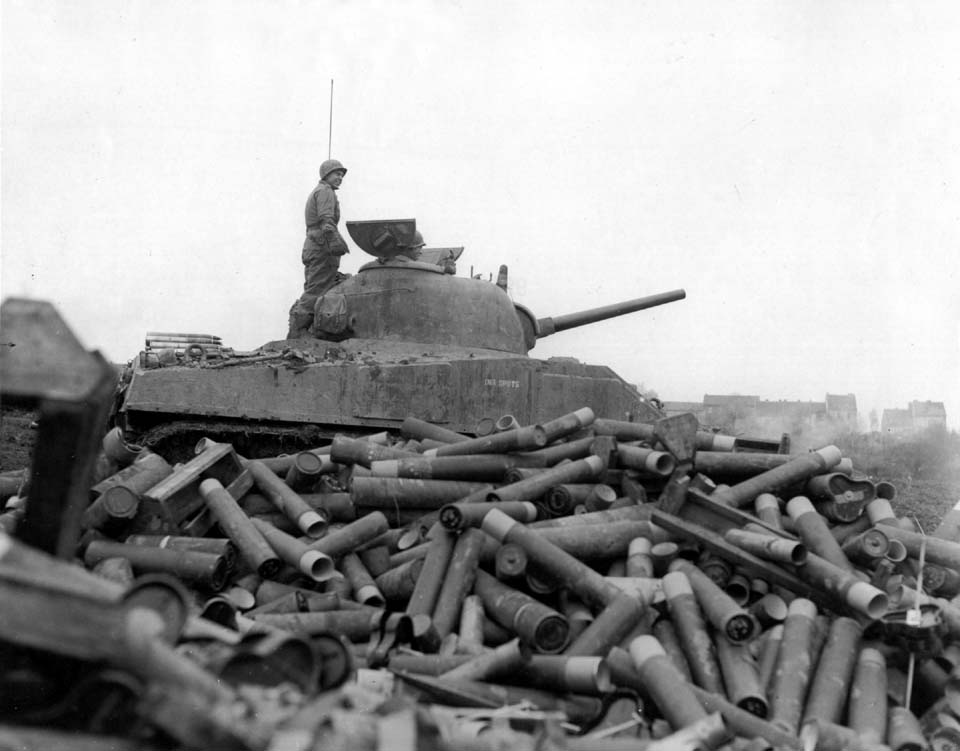 |
|
Surveying a Burnt Out Pz.Kpfw.IV Ausf.J
|
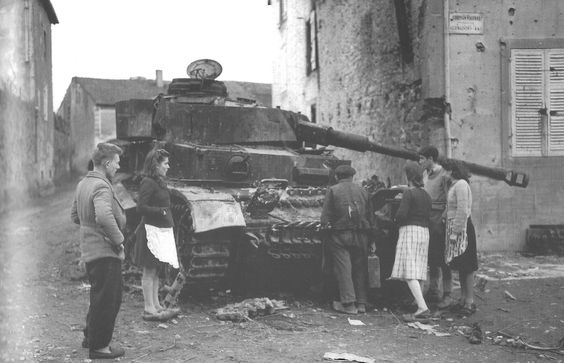 |
|
B-17 Crash Landing
|
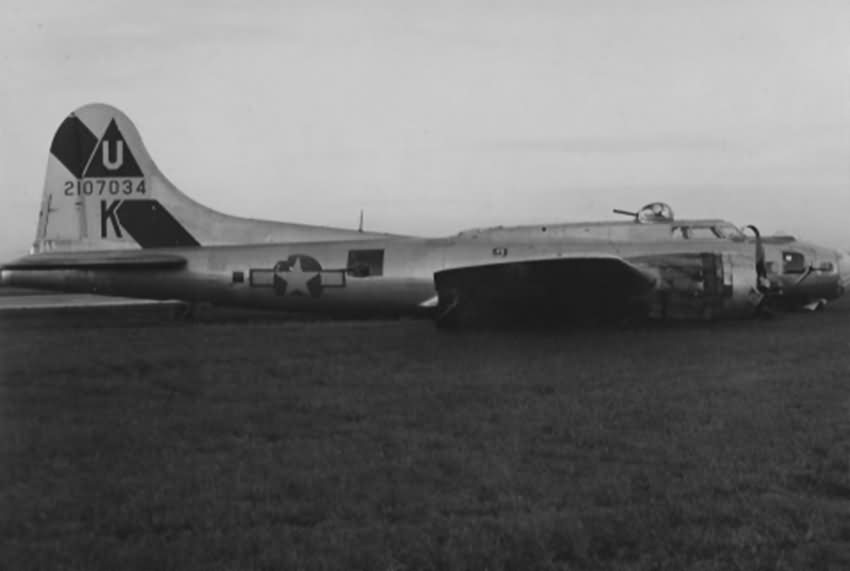 |
|
|







